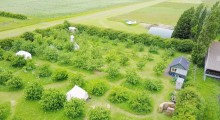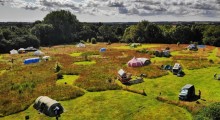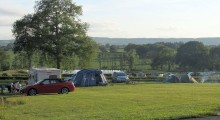Fife is situated between the Firth of Tay and the Firth of Forth. The historic town of St. Andrews is located on the north east coast of Fife. It is well known for one of the most ancient universities in Europe and is renowned as the home of golf. St. Andrews university was founded in 1413 and now has a student community from over 100 nations. The game of golf has been played on the links at St. Andrews since around 400AD. St. Andrews has long been a resort for royalty and Mary Queen of Scots made several visits to play golf in the 16th century. The Open Championship is held here every summer. The cathedral was visited by many pilgrims throughout the middle ages. It is open to the public and looked after by Historic Scotland.
Dunfermline is a large town in Fife and the former capital of Scotland. The ruins of Dunfermline palace are an important tourist attraction. All that remains of the palace today is the kitchen and the impressive south wall. Falkland palace has been a royal palace since the days of the Stewarts. Mary Queen of Scots was a frequent visitor here enjoying the peace away from the politics of Edinburgh. The Royal burgh of Falkland became Scotland\'s first conservation village. It includes a thatched building dating back to the 1600\'s. There is an exhibition of the burgh in the restored town hall.
Kirkcaldy is a town of the east coast. The town is a conservation area. Kirkcaldy museum and art gallery is the main museum and holds a large collection of paintings by Scottish artists. The museum has an exhibition covering the towns heritage.
Glenrothes is a large town in the heart of Fife. The most prominent landmark is the river Leven bridge which towers over the riverside park. At Balfarg, north east of the town, is a prehistoric monument and contains the remnants of a stone circle which has been partially reconstructed.
Read more about Fife
 Camping Le Clos Bouyssac
Camping Le Clos Bouyssac Loch Tay Highland Lodges
Loch Tay Highland Lodges Sauchope Links Park
Sauchope Links Park Linnhe Lochside Holidays
Linnhe Lochside Holidays Braidhaugh Holiday Park
Braidhaugh Holiday Park Badrallach Campsite, Bothy & Holiday Cottage
Badrallach Campsite, Bothy & Holiday Cottage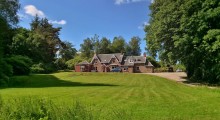 West Highland Way Campsite and Hotel Accommodation
West Highland Way Campsite and Hotel Accommodation Ruberslaw Wild Woods Camping
Ruberslaw Wild Woods Camping Mountview Lochinver
Mountview Lochinver Eriskay B&B and Glamping
Eriskay B&B and Glamping Harvest Moon Holidays
Harvest Moon Holidays Goldpark Leisure
Goldpark Leisure Hill Farm Caravan and Camping Park
Hill Farm Caravan and Camping Park Tanner Farm Park
Tanner Farm Park Plough Leisure Caravan Park
Plough Leisure Caravan Park Harry's Field
Harry's Field Hill Cottage Farm Camping & Caravan Park
Hill Cottage Farm Camping & Caravan Park Forest Edge Touring Park (Shorefield)
Forest Edge Touring Park (Shorefield) Old Barn Touring Park
Old Barn Touring Park Ninham Country Holidays
Ninham Country Holidays Grange Farm
Grange Farm Experience Sussex at Wimbles Farm
Experience Sussex at Wimbles Farm Park Farm Caravan and Camping
Park Farm Caravan and Camping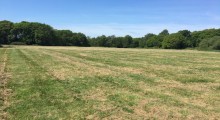 Lepe Meadows Campsite
Lepe Meadows Campsite The Garlic Farm Yurts
The Garlic Farm Yurts Lepe Beach Campsite
Lepe Beach Campsite East Crinnis Holiday Park
East Crinnis Holiday Park Hendra Holiday Park
Hendra Holiday Park Field725 Camping & Glamping
Field725 Camping & Glamping Graston Copse Holiday Park
Graston Copse Holiday Park Highlands End Holiday Park
Highlands End Holiday Park Woodovis Park
Woodovis Park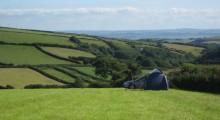 Cheglinch Camping
Cheglinch Camping Beverley Holidays
Beverley Holidays Foxhangers Canalside Holidays
Foxhangers Canalside Holidays Chy Carne Holiday Park
Chy Carne Holiday Park Trevornick Holiday Park
Trevornick Holiday Park East Thorne
East Thorne The Laurels Holiday Park
The Laurels Holiday Park Tregarton Park
Tregarton Park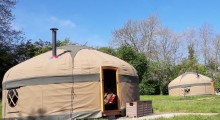 Campden Yurts
Campden Yurts Looe Country Park Caravan & Campsite
Looe Country Park Caravan & Campsite Tencreek Holiday Park
Tencreek Holiday Park Forest Glade Holiday Park
Forest Glade Holiday Park Cofton Country Holidays
Cofton Country Holidays Langstone Manor Caravan & Camping Park
Langstone Manor Caravan & Camping Park Hele Valley Holiday Park
Hele Valley Holiday Park Stowford Farm Meadows
Stowford Farm Meadows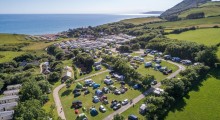 Golden Cap Holiday Park
Golden Cap Holiday Park Back of Beyond Touring Park
Back of Beyond Touring Park Merley Court Touring Park (shorefield)
Merley Court Touring Park (shorefield) Portesham Dairy Farm Camp Site
Portesham Dairy Farm Camp Site Sandyholme Holiday Park
Sandyholme Holiday Park Dorset Forest Garden
Dorset Forest Garden Home Farm Holiday Park
Home Farm Holiday Park Old Oaks Touring Park
Old Oaks Touring Park Petruth Paddocks
Petruth Paddocks Prattshayes Campsite & Exmouth Country Lodge
Prattshayes Campsite & Exmouth Country Lodge Quantock Orchard Caravan Park
Quantock Orchard Caravan Park Hole Station Campsite
Hole Station Campsite St Tinney Farm
St Tinney Farm Trewan Hall
Trewan Hall Hobby Farm
Hobby Farm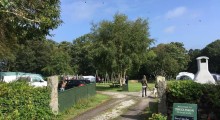 Treglisson Touring Park
Treglisson Touring Park Glastonbury Cottages and Caravanning Certificated Site
Glastonbury Cottages and Caravanning Certificated Site Woodview Campsite
Woodview Campsite Andrewshayes Holiday Park
Andrewshayes Holiday Park Court Farm Campsite
Court Farm Campsite Carvynick Holiday Park
Carvynick Holiday Park Reforge Retreat
Reforge Retreat Galton Campsite
Galton Campsite Fairwood Lakes Holiday Park
Fairwood Lakes Holiday Park Mousehole Camping
Mousehole Camping Deanwood Caravan and Camping
Deanwood Caravan and Camping The Hen's Den at Orchard Organic Farm
The Hen's Den at Orchard Organic Farm Canna Farm Campsite
Canna Farm Campsite West Kellow Yurts
West Kellow Yurts Cheglinch Farm Glamping
Cheglinch Farm Glamping Treloy Touring Park
Treloy Touring Park Nolton Cross Caravan Park
Nolton Cross Caravan Park Cwmdu Campsite
Cwmdu Campsite Waenfechan Glamping and Camping
Waenfechan Glamping and Camping Hafod Hall Camping Club
Hafod Hall Camping Club Red Kite Touring Park
Red Kite Touring Park Tyn Cornel Camping & Caravan Park
Tyn Cornel Camping & Caravan Park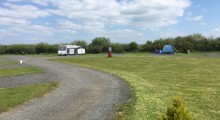 Hungerford Farm Touring Caravan Park
Hungerford Farm Touring Caravan Park Daisy Bank Caravan Park
Daisy Bank Caravan Park Plas Farm Caravan Park
Plas Farm Caravan Park Brynawelon Caravan and Camping Park
Brynawelon Caravan and Camping Park Newcourt Farm
Newcourt Farm Ty Mawr Tents and Tourers Certificated Site
Ty Mawr Tents and Tourers Certificated Site Gwaun Vale Touring Park
Gwaun Vale Touring Park Ty Cynan Caravan & Camping
Ty Cynan Caravan & Camping Carn Springs
Carn Springs Treheli Farm
Treheli Farm Nyth Robin
Nyth Robin Living Room Treehouses
Living Room Treehouses Redwood Valley
Redwood Valley The Buttles Caravan Park
The Buttles Caravan Park Allibella Shepherd's Hut
Allibella Shepherd's Hut
